Vol. 148, No. 4 — February 12, 2014
Registration SOR/2014-13 January 29, 2014
CORPORATIONS RETURNS ACT
Corporations Returns Regulations
P.C. 2014-23 January 28, 2014
Whereas, pursuant to subsection 23(2) of the Corporations Returns Act (see footnote a), a copy of the proposed Corporations Returns Regulations, substantially in the annexed form, was published in the Canada Gazette, Part I, on August 25, 2012 and interested persons were given a reasonable opportunity to make representations to the Minister of Industry with respect to the proposed Regulations;
And whereas, as required by subsection 23(2) of that Act, 90 days have elapsed since that publication date;
Therefore, His Excellency the Governor General in Council, on the recommendation of the Minister of Industry, pursuant to paragraphs 23(1)(b), (c) (see footnote b) and (f) of the Corporations Returns Act (see footnote c), makes the annexed Corporations Returns Regulations.
CORPORATIONS RETURNS REGULATIONS
INTERPRETATION
1. In these Regulations, “Act” means the Corporations Returns Act.
CALCULATING GROSS REVENUE AND ASSETS
2. (1) For the purpose of subparagraph 3(1)(a)(i) of the Act, the gross revenue of a corporation for a reporting period from the business carried on by it in Canada must, depending on the method ordinarily used by the corporation in computing its profits, be determined by adding together the amounts received or the amounts receivable in that period by reason of that business, other than as or on account of capital.
(2) For the purpose of subparagraph 3(1)(a)(ii) of the Act, the assets of a corporation as of the last day of a reporting period must be determined
- (a) in the case of a corporation resident in Canada, by adding together the value of each of its assets that was included in its balance sheet prepared as of the last day of the reporting period in accordance with generally accepted accounting principles; and
- (b) in the case of any other corporation, by adding together the value of each of its assets that was included in its balance sheet prepared as of the last day of the reporting period in accordance with generally accepted accounting principles and was
- (i) situated in Canada on the last day of the reporting period, and
- (ii) used in the reporting period primarily for the purpose of the business carried on by the corporation in Canada.
PRESCRIBED AMOUNTS FOR THE PURPOSES OF PARAGRAPHS 3(1)(a) AND (b) OF THE ACT
3. (1) For the purpose of subparagraph 3(1)(a)(i) of the Act, the prescribed greater amount is two hundred million dollars.
(2) For the purpose of subparagraph 3(1)(a)(ii) of the Act, the prescribed greater amount is six hundred million dollars.
(3) For the purpose of paragraph 3(1)(b) of the Act, the prescribed greater amount is one million dollars.
EXEMPTED CORPORATIONS
4. A corporation is exempt from the application of section 5 of the Act if it has filed
- (a) a Quarterly Survey of Financial Statements under the Statistics Act in accordance with that Act; or
- (b) a T2 Corporation Income Tax Return under the Income Tax Act in accordance with that Act — including, if applicable, Schedule 9, Related and Associated Corporations — using the General Index of Financial Information (GIFI) codes.
RETURNS
5. The return required to be filed under subsection 4(1) of the Act must be in the form set out in Schedule 1 and must include the information required in that form.
6. The return required to be filed under subsection 5(1) or (2) of the Act, must be in the form set out in Schedule 2 and must include the information required in that form.
FEES
7. The prescribed fee for inspecting, on application, the information referred to in section 16 of the Act is, in respect of information contained in the returns of
- (a) 10 or fewer corporations, $1 for each corporation;
- (b) 11 to 20 corporations, $10 plus 50 cents for each corporation in excess of 10; and
- (c) more than 20 corporations, $15 plus 10 cents for each corporation in excess of 20.
REPEAL
8. The Corporations and Labour Unions Returns Act Regulations (see footnote 1) are repealed.
COMING INTO FORCE
9. These Regulations come into force on the day on which they are registered.

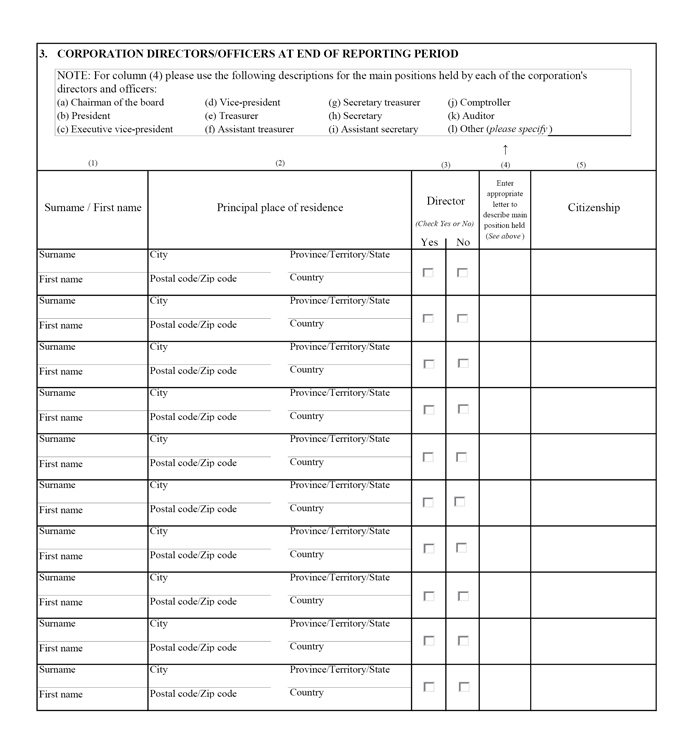
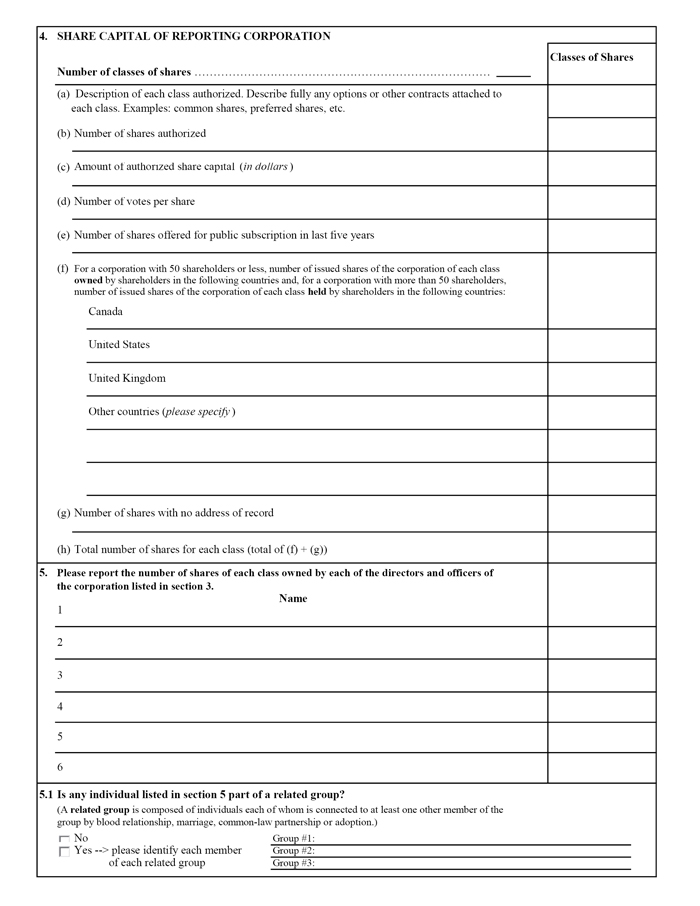
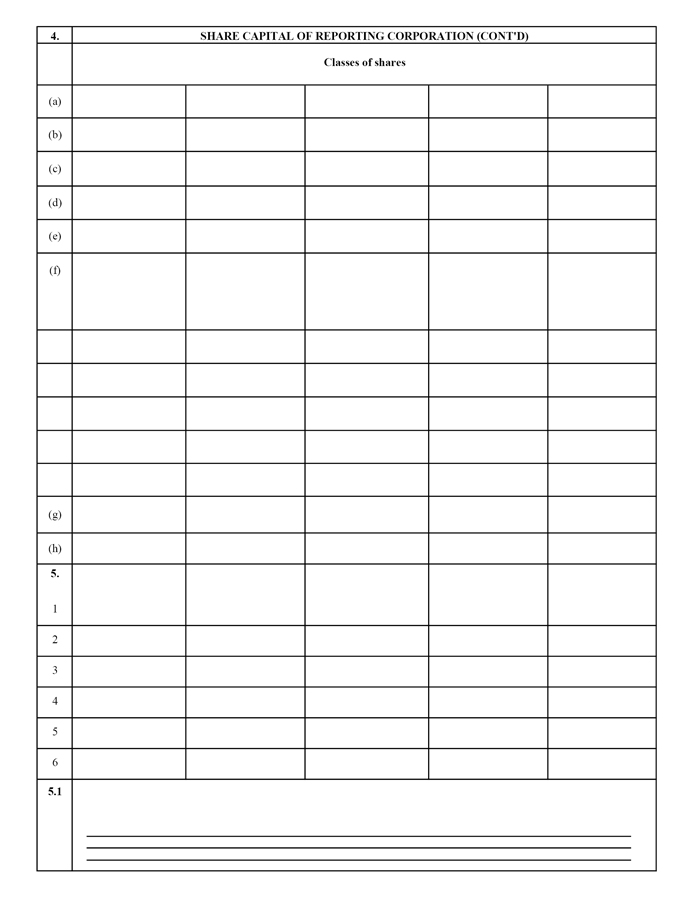

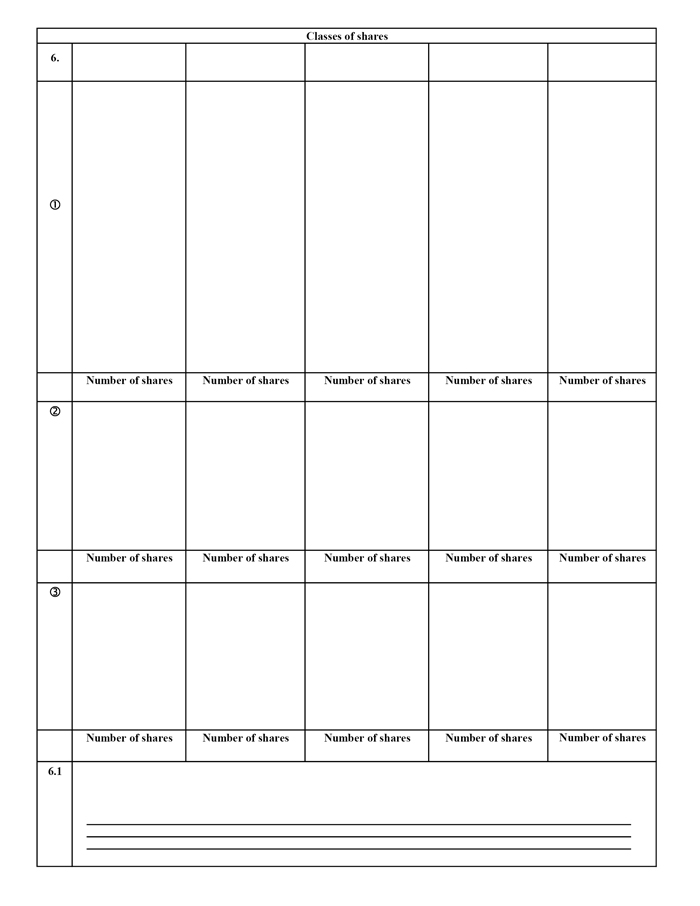

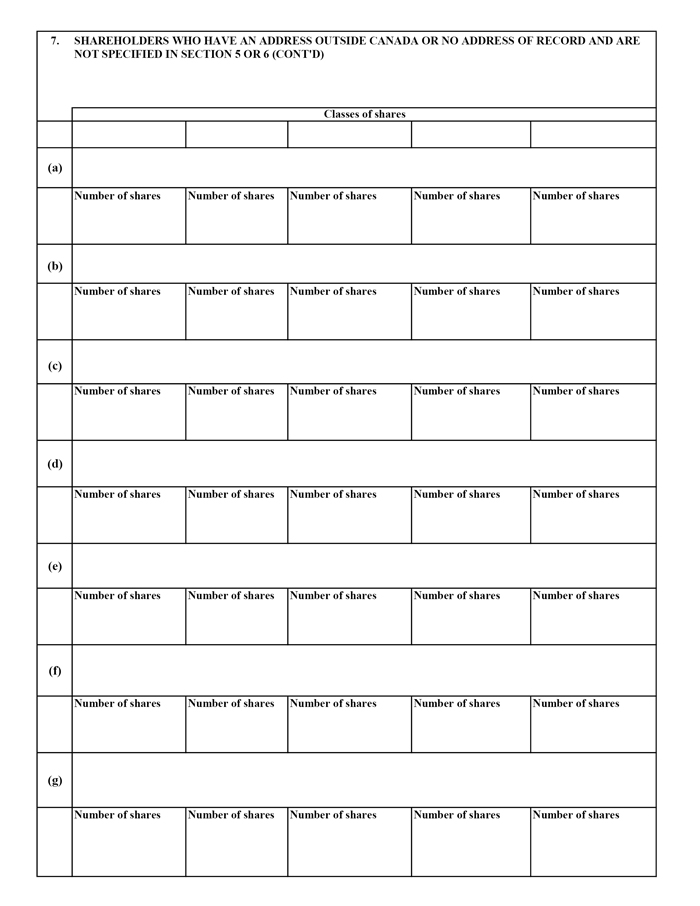
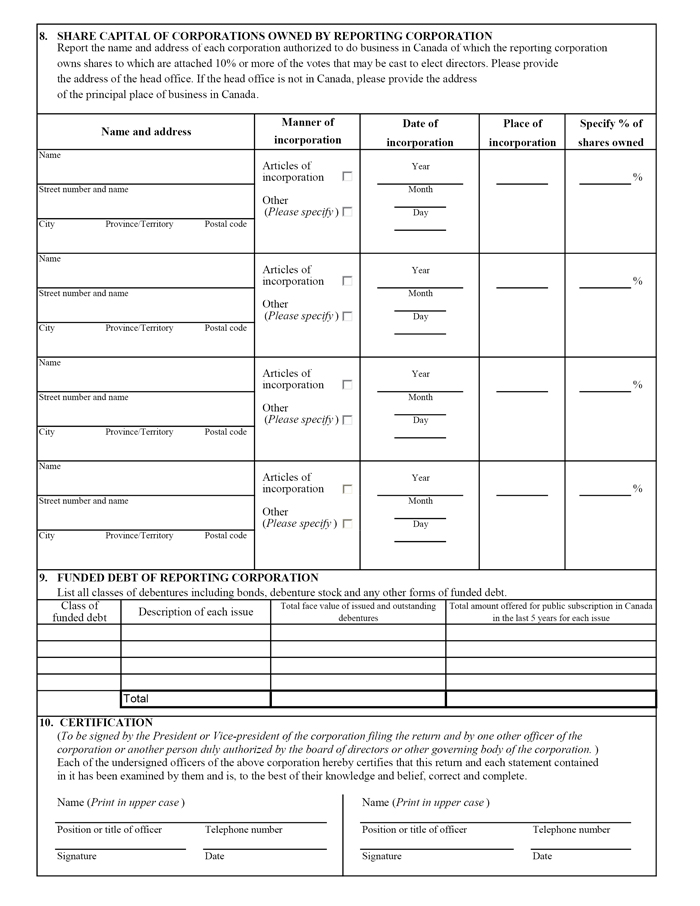
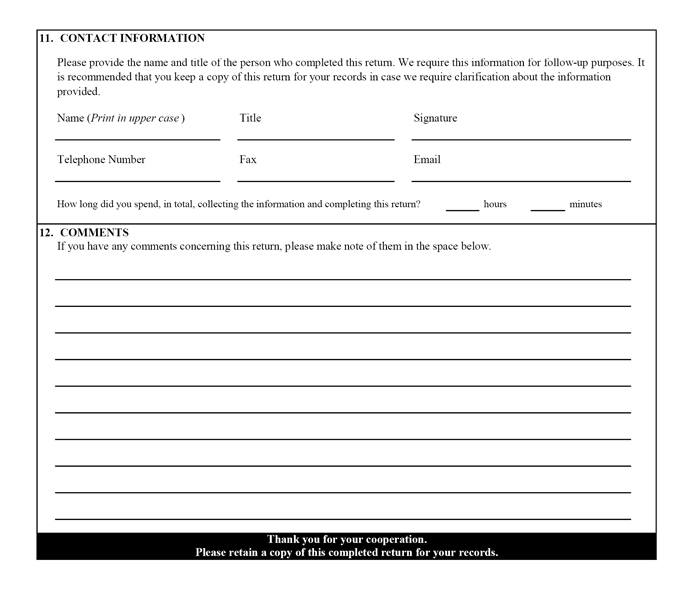
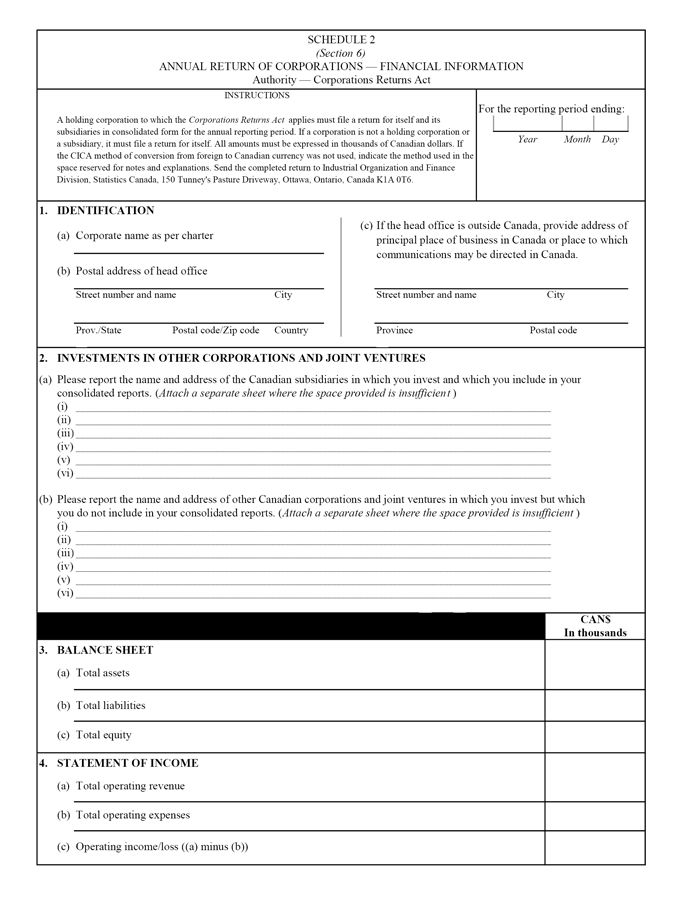
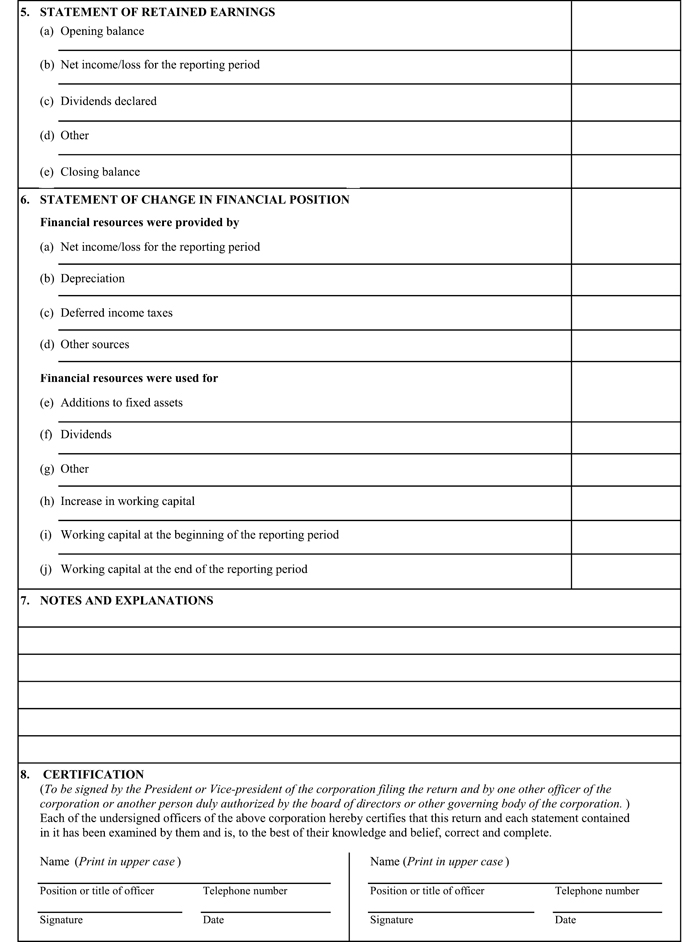
REGULATORY IMPACT ANALYSIS STATEMENT
(This statement is not part of the Regulations.)
1. Issue
The Corporations Returns Act (the “Act”), in its original version, was enacted in 1962. It has since been amended several times. The Corporations and Labour Unions Returns Act Regulations (hereafter, the “former regulations”) have also been amended to keep pace with these changes.
It is the intention of the Government that, while satisfying the need to be able to monitor the extent of foreign ownership and control of corporations in Canada, the reporting burden on corporations be limited to the extent possible. Given that the reporting thresholds were static in the Act and the former regulations, the number of corporations required to file a return under the Act had grown while that increase added no value for attaining the goal of measuring foreign control in the Canadian economy.
The former regulations contained, in their Schedule II (Ownership), an outdated form. They also contained, in their Schedule IV (Transfer of Technology), a form which was no longer needed.
2. Background
The Act was enacted in 1962 to collect financial and ownership information on corporations and unions conducting business in Canada. This information is used to evaluate the extent of non-resident control in the Canadian economy. The Act and the Corporations Returns Regulations (the “Regulations”) prescribe thresholds above which corporations are obliged to report under the Act. In 1962, the Act required corporations and unions to complete an Ownership Return if, individually or in combination with their affiliates, they had assets totalling more than $250,000 or operating revenues in excess of $500,000. (see footnote 2) At that time, the number of corporations or groups of affiliated corporations to which Statistics Canada mailed an Ownership Return form was roughly 25 000.
These reporting thresholds were last amended in 1981 for the express purpose of reducing the number of smaller corporations obliged to report under the Act. As the reporting thresholds were expressed as absolute monetary values, inflation since 1981 has brought many corporations that were not intended to be covered within the scope of the legislation.
In addition, the Act was amended in 1998 to remove the requirement for unions to file a specific return. However, the title and content of the Regulations were not revised to reflect this change.
3. Objectives
The objectives of the Regulations are to
- bring the number of corporations subject to the Act back in line with the original intent of the Act by raising the reporting thresholds;
- reflect amendments made to the Act over time;
- update the form for the returns by replacing Schedule II (Ownership) and Schedule III (Financial Information) of the former regulations by the new Schedules 1 and 2 of the Regulations, and eliminate Schedule IV (Transfer of Technology) of the former regulations without replacing it.
4. Description
The Regulations replace the former regulations, which have now been repealed, and do the following:
- raise the reporting thresholds such that only corporations with revenues of more than $200 million, assets in excess of $600 million or foreign debt and equity over $1 million are obliged to comply;
- remove references to unions, update the references to the provisions of the Act, remove references to repealed portions of the Act and, in the French version of the Regulations, replace the words “corporation” and “corporations” with the words “personne morale” and “personnes morales,” respectively, to reflect the terminology used in the Act;
- provide an updated Ownership Schedule (the new Schedule 1), containing clearer instructions, definitions and layout to make it easier to complete and submit;
- provide an updated Financial Information Schedule (now Schedule 2); and
- remove the former Schedule IV (Transfer of Technology) and all references to it.
5. “One-for-One” Rule
The Regulations constitute an “OUT” under the Rule and will result in an annualized average decrease in administrative costs to businesses of $1.2 million. Approximately 32 000 fewer corporations or groups of affiliated corporations in Canada are required to file returns, with the collective savings to corporations estimated at $1.2 million annually or a net present value of $8.2 million over 10 years. (see footnote 3) In terms of time savings, corporations will collectively spend an estimated 35 200 fewer hours completing returns for Statistics Canada. For those corporations above the new reporting thresholds, there is no change in administrative costs.
6. Small business lens
The small business lens does not apply as small businesses are not subject to the Act.
7. Consultation
The Regulations have been discussed with a number of stakeholders on a number of occasions and there has been no opposition to them. Over the period of July 2004 through August 2005, meetings and exchanges took place with stakeholders at Industry Canada, Investment Canada, Canadian Heritage, International Trade Canada and Finance Canada, as well as with divisions of Statistics Canada, on a number of proposed revisions to the Corporations Returns Act program at Statistics Canada, including the raising of the reporting thresholds. As work proceeded on the development and analysis of the proposed changes, the stakeholders were kept informed. No concerns were raised.
Beginning with the second quarter 2006 public release, in August of 2006, of the Inter-Corporate Ownership CD-ROM, a product resulting from the Corporations Returns Act program, users were informed of the proposed changes to the reporting thresholds. There have been more than 20 releases of this product with this notification included. Again, no concerns have been raised.
The Regulations were prepublished in the Canada Gazette, Part I, on August 25, 2012. Prepublication was followed by a 90-day comment period and no comments were received.
8. Rationale
Raising the reporting thresholds
The Act was enacted in 1962 to collect financial and ownership information on corporations conducting business in Canada. This information is used to evaluate the extent of non-resident control in the Canadian economy. In 1962, the Act required corporations to complete an Ownership Return if, individually or in combination with their affiliates, they had assets totalling more than $250,000 or operating revenues in excess of $500,000. (see footnote 4) At that time, the number of corporations or groups of affiliated corporations to which Statistics Canada mailed the Ownership Returns was roughly 25 000.
Over the years, as the reporting thresholds have remained static, the number of corporations required to file returns under the Act has increased considerably due to inflation, drawing many smaller corporations into the reporting population. This resulted in an amendment to the Act in 1981 whereby the reporting thresholds were raised to $10 million in assets and $15 million in operating revenues. In addition, corporations with foreign debt or equity in excess of $200,000 were also required to file a return. These changes reduced the number of businesses that were subject to the reporting requirements of the Act to levels similar to those of 1962.
Since the 1981 amendments to the Act, the reporting thresholds had not changed. Consequently, the number of corporations subject to the Act had grown to approximately 56 600, at a collective ongoing cost to them of nearly $2 million annually or a net present value of about $14.5 million, with many smaller corporations being required to file Ownership Returns while not having any foreign ownership or control. For this reason, new reporting thresholds are prescribed in the Regulations, raising the reporting thresholds to revenues of more than $200 million, assets in excess of $600 million or foreign debt and equity over $1 million. With these changes, approximately 32 000 fewer corporations or groups of affiliated corporations in Canada are required to file returns. At the same time, the impact on estimates of foreign control is insignificant as 99% of total foreign-controlled assets and 98% of total foreign-controlled revenues are still covered.
Reflecting previous amendments to the Act
In 1998, the Act was amended to remove the requirement for unions to file a specific return, given that foreign control of unions was no longer of concern to Canada. Its title was also changed; its short version became the Corporations Returns Act. However, the former regulations still referred to declarations to be made by unions and still referred to the former title of the Act.
The Regulations refer to the current title of the Act. In addition, the Regulations do not include references to repealed portions of the Act and reflect changes made in the 1981 and 1998 amendments to the Act.
The Regulations also contain updated references to provisions of the Act. For instance, section 4 of the former regulations referred to section 4.1 of the Act, at a time when there was no longer any section bearing that number in the Act; that provision of the Regulations now correctly refers to section 5 of the Act.
Finally, the French version of the Regulations uses the words “personne morale” and “personnes morales,” respectively, rather than the words “corporation” and “corporations” as in the former regulations, to reflect the terminology used in the Act.
Schedules
The former regulations still contained, in their Schedule II, an Ownership Return based on the 1984 version of the Act. The Regulations now establish a more up-to-date version of the Ownership Schedule, which is the new Schedule 1, reflecting changes to the Act, the Regulations and changes in terminology over time, such as the use of the words “personne morale” rather than “corporation” in French.
Statistics Canada ceased using Schedule IV (Transfer of Technology) of the former regulations in 2003. This schedule collected information on transfers of technology from non-residents, such as amounts paid for scientific research and development, and royalties and fees for patents, licences, industrial designs and other related payments. It was originally added in the mid-eighties to satisfy the data requirements of the science program at Statistics Canada. However, Schedule IV did not prove to be a good vehicle for the collection of research and development data. There is no “Transfer of Technology” schedule in the Regulations.
9. Implementation, enforcement and service standards
All information about the program has been updated to reflect the new reporting thresholds, including materials on the Statistics Canada Web site, completion guides, etc. The form for the Ownership Return required under subsection 4(1) of the Act has been updated to reflect the current changes.
10. Contact
Paula Thomson
Director
Industrial Organization and Finance Division
Statistics Canada
Jean Talon Building, 10th Floor, Section B8
150 Tunney’s Pasture Driveway
Ottawa, Ontario
K1A 0T6
Telephone: 613-951-2198
Fax: 613-951-0318
Email: paula.thomson@statcan.gc.ca
- Footnote a
R.S., c. C-43; S.C. 1998, c. 26, s. 63 - Footnote b
S.C. 1998, c. 26, s. 69 - Footnote c
R.S., c. C-43; S.C. 1998, c. 26, s. 63 - Footnote 1
SOR/84-125 - Footnote 2
Assets and revenues of affiliates are to be included in these calculations. - Footnote 3
In 2012 dollars and using an average hourly wage rate of $35.00. - Footnote 4
Assets and revenues of affiliates are to be included in these calculations.